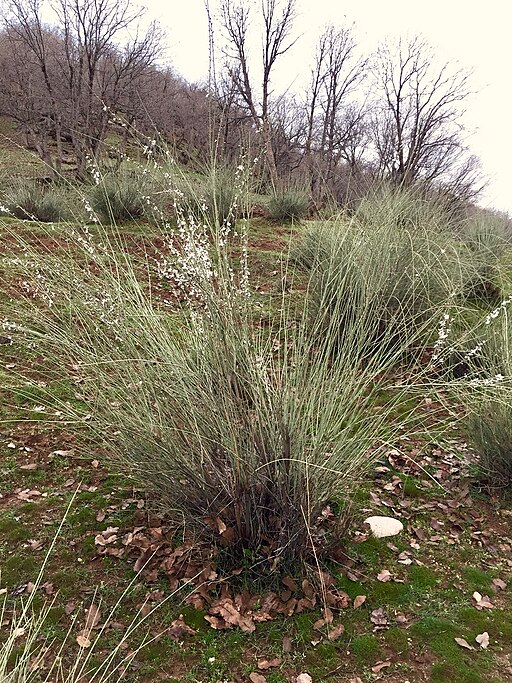Classification System: APG IV
Superregnum: Eukaryota
Regnum: Plantae
Cladus: Angiosperms
Cladus: Eudicots
Cladus: Core eudicots
Cladus: Rosids
Cladus: Eurosids I
Ordo: Rosales
Familia: Rosaceae
Subfamilia: Amygdaloideae
Tribus: Amygdaleae
Genus: Prunus
Subgenus: P. subg. Prunus
Sectio: P. sect. Amygdalus
Species: Prunus arabica
Name
Prunus arabica (Olivier) Meikle
References
Kew Bulletin. Kew, England 19:229. 1965
USDA, ARS, National Genetic Resources Program. Germplasm Resources Information Network - (GRIN) [Online Database]. [1]
Prunus arabica is a species of wild almond found across the Middle East. It is a broomlike shrub typically 0.75 to 2 m tall, with brown bark. Its leaves have a 5-8 mm petiole and the leaf blades are 15 to 44 mm long and 3 to 10 mm wide. Its inflorescences have dark red hypanthia and sepals (green on the interior of the sepals), and white, pale pink or pink petals. The flowers are borne on a pedicel about 3 mm long, which lengthens to 6 mm when the fruit is fully developed.[3]
It prefers to grow in arid or semiarid areas at 500 to 2700 m above sea level. A full genetic and morphological analysis suggests that Prunus scoparia may be conspecific with it; certainly it is its closest relative.[3] It is occasionally cultivated for erosion control, as its brushy growth form makes a good windbreak.[4][5]
References
Kew Bulletin 19(2): 229. 1965
Voyage dans l'empire Othoman, L'Égypte et la Perse, fait par ordre du gouvernement, pendant les six premières années de la République 3: 460. 1807
Yazbek, Mariana Mostafa (February 2010). Systematics of Prunus Subgenus Amygdalus: Monograph and Phylogeny (PDF) (PhD). Cornell University. Retrieved 1 November 2018.
Hammer, K.; Gebauer, J.; Al Khanjari, S.; Buerkert, A. (24 December 2008). "Oman at the cross-roads of inter-regional exchange of cultivated plants". Genetic Resources and Crop Evolution. 56 (4): 547–560. doi:10.1007/s10722-008-9385-z. S2CID 24454772. Retrieved 1 November 2018.
"Prunus arabica PFAF Plant Database".
Retrieved from "http://en.wikipedia.org/"
All text is available under the terms of the GNU Free Documentation License


